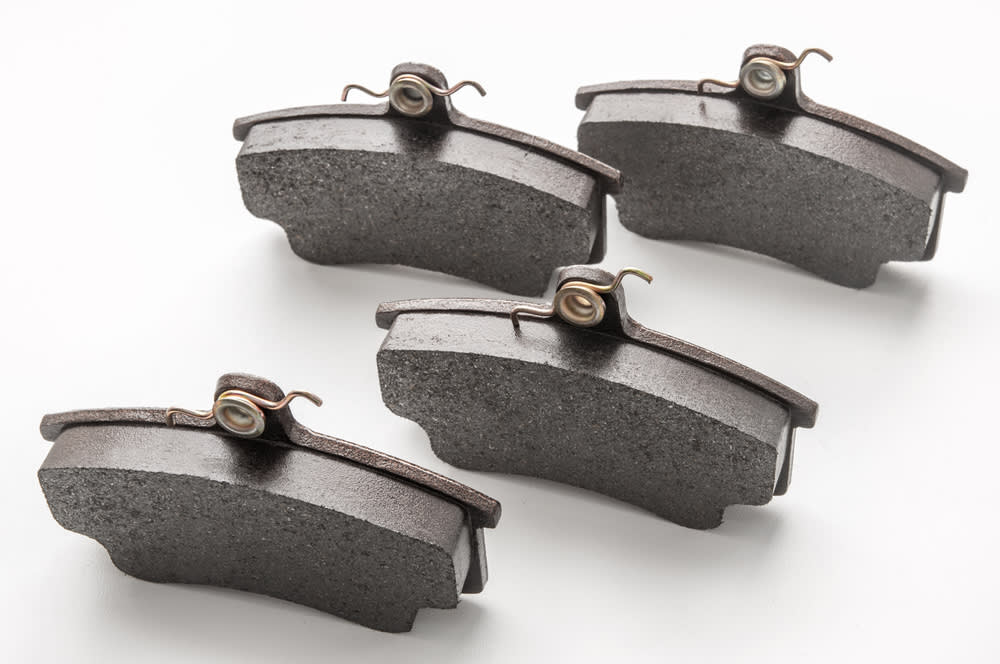

Brake pads are an essential component of the braking system of your car. Every time you press the brake pedal, this force translates by way of a hydraulic system to the caliper. This caliper in turn pushes the brake pad onto the car’s brake rotors that are flat discs on the wheels. The pressure and friction thus created work to slow down your car or bring it to a complete halt. Brake pads are crafted out of different materials and since they absorb heat and energy during braking, they take a lot of wear. This is why they need replacing from time to time. When choosing brake pads for your car, you must take into consideration the type of car you have and the conditions under which you typically drive.
Brake pads are made of semi-metallic, organic, or ceramic materials and each have unique benefits and drawbacks to consider.
Semi-metallic brake pads
Most cars and other vehicles use semi-metallic brake pads. These brake pads are comprised of metal shavings of copper, steel, graphite, and brass bonded with resin. They are best suited for vehicles that are used for everyday driving. Heavy-duty vehicles like trucks that carry loads and need high braking power also use semi-metallic brake pads. Semi-metallic brake pad manufacturers have different formulations for creating them and the newest ones in the market work efficiently and more quietly.
Semi-metallic brake pads perform well, last longer and are tough since they are made primarily of metal.
These brake pads are economical.
The semi-metallic brake pads are typically heavier than other kinds and could affect the fuel efficiency of the car to a small extent.
Since the brake pads rub against other brake components, they tend to wear them down also.
Over time, when the brake pads have worn down a little, they could make grinding or squeaking sounds when creating friction.
Semi-metallic brake pads function best when they are warm. Thus, in colder climates, they need time to warm up and when you brake, you might find a slight delay in the car responding.
You can choose brake pads that have ceramic components combined with metals. This could give you the positives of the ceramic brake pads, but at costs that are more economical.
Organic brake pads
Organic brake pads comprise of non-metallic components like glass, rubber, and Kevlar bonded in resin. They are softer and perform better in high temperature conditions because the heat further binds the components together. Previously, organic brake pads had asbestos components, but users found that on braking, the friction resulted in asbestos dust that is very dangerous to breathe. This is why manufacturers phased out this material and the newest organic brake pads are often also called non-asbestos organic brake pads.
Organic brake pads are typically quieter even after prolonged use.
These brake pads are not very durable and need replacing sooner. They also create more dust.
Organic brake pads are eco-friendly and don’t harm the environment when they degrade. Their dust is not harmful either.
These brake pads do not perform as well as semi-metallic brake pads and are thus better suited for lightweight vehicles and lighter traffic conditions where there is no excessive braking.
Ceramic brake pads
Ceramic brake pads comprise mainly of ceramic fibers, and other filling materials bonded together. They might also have copper fibers. These brake pads work very well in high performance vehicles and racing cars that generate high levels of heat when braking.
Ceramic brake pads are typically very expensive and are thus not well suited for regular driving.
These brake pads are very durable and break down very slowly. This is why they don’t need replacing very often.
The ceramic content of the brake pads makes them extremely lightweight and they generate less dust on friction.
Ceramic brake pads perform very well under harsh braking and can dissipate heat quickly.
Symptoms that the brake pads need replacing
Manufacturers place a small piece of soft metal in the brake pad. Once the brake pad wears to a certain level, the metal begins to rub against the brake rotor. If you hear a squealing sound every time you brake, that’s a sign that the brake pad needs replacing.
High-end cars include an electronic monitoring system. This system sends an alert through an electronic circuit that illuminates a warning light on your dashboard. This is how you know that it’s time to replace the brake pads.



